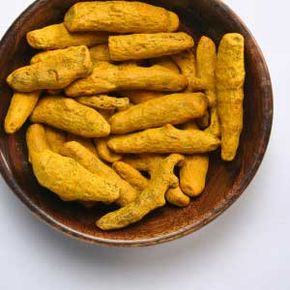Turmeric might just be one of the most versatile spices on the planet. Whether you're familiar with it or not, you've probably eaten it at some point or another because turmeric is one of the main ingredients in both curry and mustard. It not only helps to give them their unique flavors, but it's also responsible for giving them both their yellow color. For this reason, turmeric is also used in textile dyes. Beyond its abilities as a culinary spice and a coloring agent, turmeric has been used for hundreds of years in traditional and Ayurvedic medicine to treat a variety of medical conditions. It is a known anti-inflammatory and scientific research has been conducted regarding its use in treating several medical conditions including high cholesterol, Irritable Bowel Syndrome (IBS), rheumatoid arthritis and scabies.
Turmeric is harvested from the roots of the Curcuma longa plant, which is native to India [source: Curcuma Longa]. To create turmeric, the roots of the Curcuma Longa plant, known as rhizomes, are boiled, dried and then ground into a powder. Eastern cultures have been incorporating turmeric into their diets and taking advantage of its medicinal properties for centuries. In recent years, the rest of the world has begun to take notice; time and resources are being put toward unlocking the secrets behind turmeric's healthy benefits in labs around the globe.
Advertisement
While there is still a lot to learn, it has been determined that turmeric has also proven to be a strong antioxidant, neutralizing free radicals throughout the human body. Aside from that, it's also shown promise in the fight against Alzheimer's and many different forms of cancer. For centuries, it's even been a home remedy for diarrhea and bladder infections [source: Curcuma Longa].
Read on to find out about how turmeric works in your body.
Advertisement

